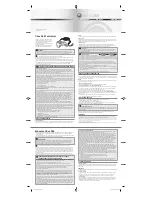
14. Fuse failure supervision
The fuse failure supervision detects failures between the
voltage measurement circuit and the relay. The failures are
detected either by the negative sequence-based algorithm or
by the delta voltage and delta current algorithm. Upon the
detection of a failure, the fuse failure supervision function
activates an alarm and blocks voltage-dependent protection
functions from unintended operation.
15. Current circuit supervision
Current circuit supervision is used for detecting faults in the
current transformer secondary circuits. On detecting of a fault
the current circuit supervision function activates an alarm LED
and blocks certain protection functions to avoid unintended
operation. The current circuit supervision function calculates
the sum of the phase currents from the protection cores and
compares the sum with the measured single reference current
from a core balance current transformer or from separate cores
in the phase current transformers.
16. Access control
To protect the relay from unauthorized access and to maintain
information integrity, the relay is provided with a four-level, role-
based authentication system with administrator-programmable
individual passwords for the viewer, operator, engineer and
administrator levels. The access control applies to the local
HMI, the Web HMI and PCM600.
17. Inputs and outputs
Depending on the standard configuration selected, the relay is
equipped with three phase-voltage inputs and one residual
current input or three phase current inputs, one residual-
current input and three phase voltage inputs.
The residual current input and the phase-current inputs are
rated 1/5 A. The three phase-voltage inputs and the residual-
voltage input covers the rated voltages 60-210 V. Both phase-
to-phase voltages and phase-to-earth voltages can be
connected.
The phase-current input 1 A or 5 A, the residual-current input 1
A or 5 A, and the rated voltage of the residual voltage input are
selected in the relay software. In addition, the binary input
thresholds 16…176 V DC are selected by adjusting the relay’s
parameter settings.
All binary input and output contacts are freely configurable with
the signal matrix or application configuration functionality of
PCM600.
As an option for standard configurations B the relay offers six
RTD inputs and two mA inputs. By means of the optional
RTD/mA module the relay can measure up to eight analog
signals such as temperature, pressure and tap changer position
values via the six RTD inputs or the two mA inputs using
transducers. The values can, apart from measuring and
monitoring purposes, be used for tripping and alarm purposes
using the offered optional multipurpose protection functions.
Optionally for standard configuration A, a binary input and
output module can be selected. It has three high speed binary
outputs (HSO) and it decreases the total operate time with
typically 4-6 ms compared to the normal power outputs.
See the Input/output overview table and the terminal diagrams
for more information about the inputs and outputs.
Table 4. Input/output overview
Std. conf.
Order code digit
Analog channels
Binary channels
5-6
7-8
CT
VT
BI
BO
RTD
mA
A
EA
AD
-
5
12
4 PO + 6 SO
-
-
FE
-
5
12
4 PO + 2 SO
+ 3 HSO
-
-
B
CA
BB
4
3
14
4 PO + 9 SO
-
-
CC
AH
4
3
8
4 PO + 6 SO
6
2
Voltage Protection and Control
1MRS757058 K
REU615
Product version: 5.0 FP1
14
ABB
Summary of Contents for Relion 615 series
Page 1: ...RELION 615 SERIES Voltage Protection and Control REU615 Product Guide...
Page 54: ...54...
Page 55: ......














































